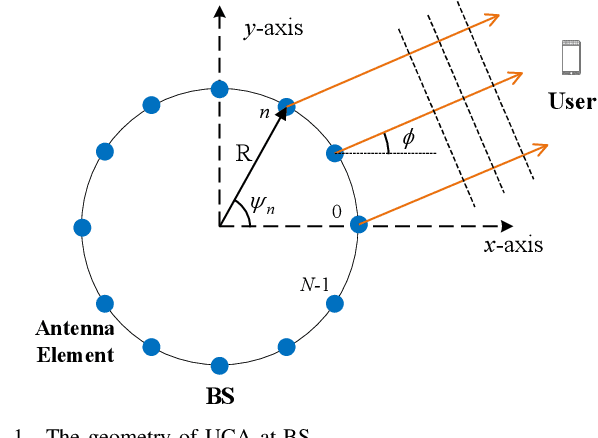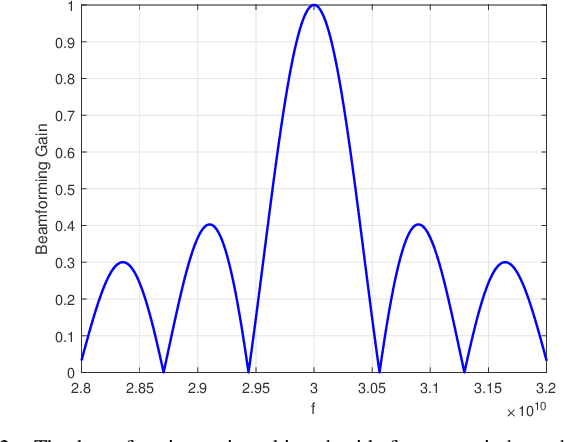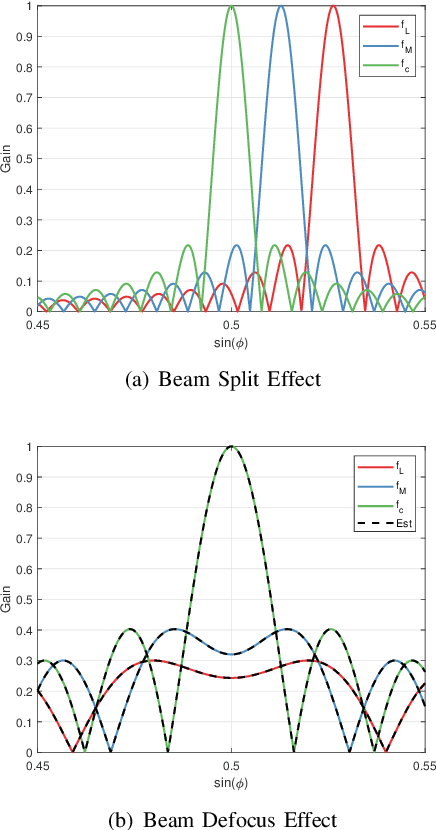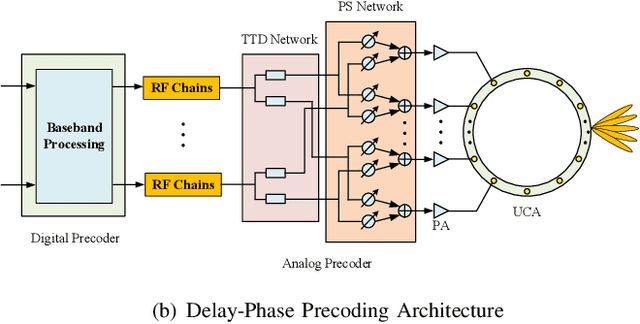The Manifestation of Spatial Wideband Effect in Circular Array: From Beam Split to Beam Defocus
Paper and Code
May 04, 2023



Millimeter-wave (mmWave) and terahertz (THz) communications with hybrid precoding architectures have been regarded as energy-efficient solutions to fulfill the vision of high-speed transmissions for 6G communications. Benefiting from the advantages of providing a wide scan range and flat array gain, the uniform circular array (UCA) has attracted much attention. However, the growing bandwidth of mmWave and THz communications require frequency-independent phase shifts, which can not be perfectly realized through frequency-independent phase shifters (PSs) in classical hybrid precoding architectures. This mismatch causes the beam defocus effect in UCA wideband communications, where the high-gain beams could not form at non-central frequencies. In this paper, we first investigate the characteristics of the beam defocus effect distinguishing itself from the beam split effect in uniform linear array (ULA) systems. The beam pattern of UCA in both frequency domain and angular domain is analyzed, characterizing the beamforming loss caused by the beam defocus effect. Then, the delay-phase-precoding (DPP) architecture which leverages the true-time-delay (TTD) devices to generate frequency-dependent phase shifts is employed to mitigate the beam defocus effect. Finally, performance analysis and extensive simulation results are provided to evaluate the effectiveness of the DPP architecture in UCA systems.
 Add to Chrome
Add to Chrome Add to Firefox
Add to Firefox Add to Edge
Add to Edge